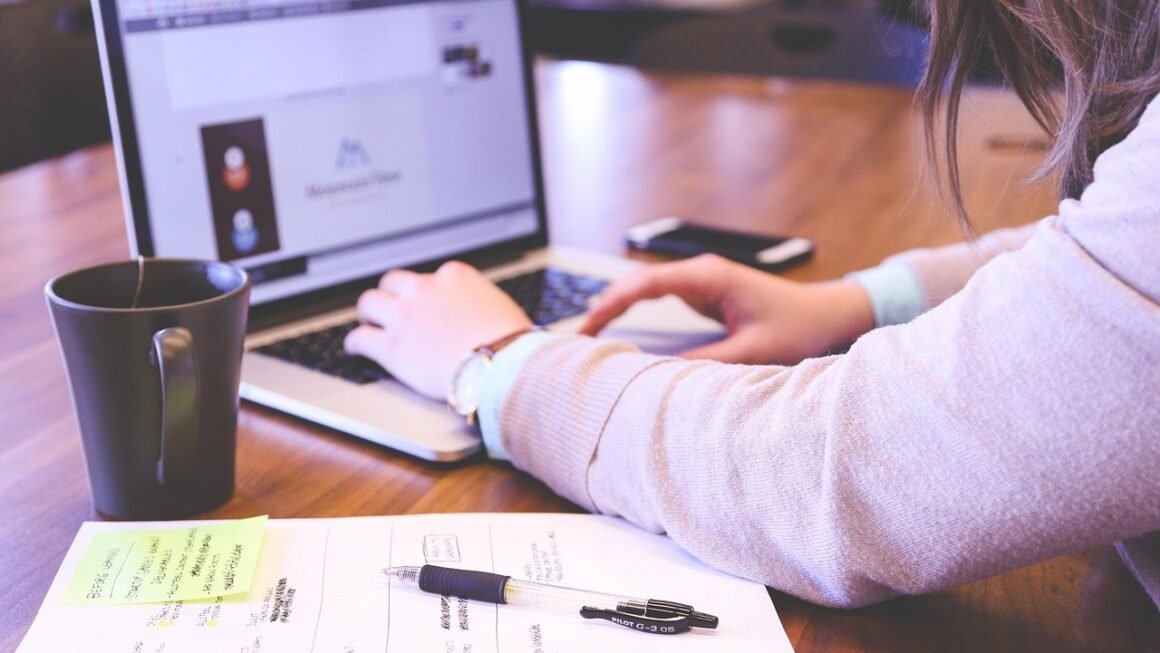Are you constantly feeling like you’re running in place, overwhelmed by your to-do list, and struggling to squeeze more out of your day? You’re not alone. Productivity is a skill that can be learned and improved. In today’s fast-paced world, mastering productivity techniques is essential for success, whether you’re a student, a professional, or an entrepreneur. This guide will provide you with actionable strategies to boost your productivity and achieve your goals.
Understanding Productivity
What is Productivity?
Productivity is often misunderstood as simply doing more. However, true productivity is about achieving more of the right things, efficiently and effectively. It’s the ratio of outputs (results) to inputs (time, resources, effort).
- Focus on outcomes: Don’t measure productivity solely by the number of hours worked. Instead, focus on the quality and impact of your accomplishments.
- Efficiency is key: Aim to minimize wasted time and effort while maximizing results.
- Effectiveness matters: Ensure you are working on tasks that contribute to your overall goals.
The Importance of Productivity
Boosting productivity offers significant benefits:
- Increased efficiency: Completing tasks faster and with better results.
- Reduced stress: Gaining control over your workload and deadlines.
- Improved work-life balance: Freeing up time for personal pursuits and relaxation.
- Career advancement: Demonstrating value and achieving professional goals.
- Enhanced overall well-being: Feeling more accomplished and satisfied.
- Example: Imagine you spend 8 hours a day responding to emails but only generate one new lead. By implementing better email management techniques, you could cut that time to 4 hours and generate three leads, significantly increasing your productivity.
Time Management Techniques
The Pomodoro Technique
The Pomodoro Technique is a time management method that uses focused work intervals with short breaks to improve concentration and productivity.
- How it works: Work in 25-minute intervals (Pomodoros) followed by a 5-minute break. After four Pomodoros, take a longer break of 20-30 minutes.
- Benefits: Enhances focus, reduces mental fatigue, and provides a structured approach to tasks.
- Tools: Use a timer (smartphone app, kitchen timer, or dedicated Pomodoro app) to track your intervals.
- Practical Tip: During your breaks, step away from your workspace, stretch, or do something relaxing to recharge.
The Eisenhower Matrix (Urgent/Important)
The Eisenhower Matrix is a decision-making tool that helps you prioritize tasks based on their urgency and importance.
- Four Quadrants:
Urgent and Important: Do these tasks immediately (e.g., crisis, deadline).
Important but Not Urgent: Schedule these tasks for later (e.g., planning, relationship building).
Urgent but Not Important: Delegate these tasks if possible (e.g., some meetings, interruptions).
Neither Urgent nor Important: Eliminate these tasks (e.g., time-wasting activities).
- Application: Categorize your tasks using the matrix to identify priorities and avoid getting bogged down by less important activities.
- Example: Responding to a critical client email is “Urgent and Important,” while attending a non-essential meeting could be delegated or eliminated.
Time Blocking
Time blocking involves scheduling specific blocks of time for particular tasks or activities.
- Create a schedule: Allocate time slots in your calendar for work tasks, meetings, breaks, and personal activities.
- Be realistic: Estimate the time required for each task accurately.
- Stick to your schedule: Treat your time blocks as important appointments.
- Benefit: Provides a structured framework for your day, ensuring that you allocate time to your most important tasks.
Optimizing Your Workspace and Tools
Decluttering Your Physical and Digital Workspace
A clean and organized workspace can significantly boost productivity.
- Physical Workspace:
Remove clutter from your desk and surrounding area.
Organize your files and documents.
Ensure you have adequate lighting and comfortable seating.
- Digital Workspace:
Organize your computer files and folders.
Clear your desktop of unnecessary icons.
Manage your email inbox effectively (e.g., use folders, filters, and archiving).
- Benefit: Reduces distractions and improves focus. Studies show that a cluttered workspace can increase stress levels and reduce productivity by up to 40%.
Leveraging Technology
Utilize technology tools to streamline your workflow and automate repetitive tasks.
- Task Management Apps: Asana, Trello, and Todoist help you organize tasks, set deadlines, and track progress.
- Note-Taking Apps: Evernote and OneNote allow you to capture ideas, organize information, and collaborate with others.
- Automation Tools: Zapier and IFTTT (If This Then That) automate repetitive tasks by connecting different apps and services.
- Example: Use Zapier to automatically save email attachments to a specific folder in your cloud storage.
Minimizing Distractions
Identify and eliminate common distractions that hinder productivity.
- Turn off notifications: Disable notifications on your phone and computer.
- Use website blockers: Block distracting websites and social media during work hours.
- Create a dedicated workspace: Find a quiet and distraction-free environment to work in.
- Communicate your availability: Let colleagues and family members know when you need uninterrupted time.
- Tip: Consider using noise-canceling headphones to block out background noise.
Prioritizing Tasks and Setting Goals
SMART Goals
Set specific, measurable, achievable, relevant, and time-bound (SMART) goals to provide clarity and direction.
- Specific: Clearly define what you want to achieve.
- Measurable: Establish criteria for measuring progress.
- Achievable: Set realistic goals that are within your capabilities.
- Relevant: Ensure your goals align with your overall objectives.
- Time-bound: Set a deadline for achieving your goals.
- Example: Instead of setting a goal to “write more blog posts,” set a SMART goal to “write and publish two blog posts per week for the next month.”
The Pareto Principle (80/20 Rule)
The Pareto Principle states that roughly 80% of your results come from 20% of your efforts.
- Identify key tasks: Determine the 20% of tasks that contribute to 80% of your results.
- Focus on high-impact activities: Prioritize these tasks and dedicate more time and effort to them.
- Delegate or eliminate low-impact activities: Free up time by delegating or eliminating tasks that have minimal impact.
- Practical Example: If 80% of your sales come from 20% of your clients, focus your efforts on nurturing those key client relationships.
Task Batching
Task batching involves grouping similar tasks together and completing them in a single block of time.
- Group similar tasks: Identify tasks that require similar mental effort or resources.
- Allocate dedicated time: Schedule specific time blocks for each batch of tasks.
- Minimize context switching: Focus on one type of task during each batch to improve efficiency and reduce mental fatigue.
- Example: Respond to all emails in one batch, make all phone calls in another batch, and write all blog posts in a separate batch.
Maintaining Energy and Focus
Regular Breaks and Rest
Taking regular breaks throughout the day is crucial for maintaining energy and focus.
- Short breaks: Take short breaks every 25-50 minutes to stretch, walk around, or do something relaxing.
- Longer breaks: Take longer breaks for lunch and other activities to recharge.
- Adequate sleep: Aim for 7-8 hours of sleep per night to improve cognitive function and productivity.
- Benefit: Prevents burnout, reduces mental fatigue, and improves overall well-being.
Healthy Diet and Exercise
A healthy diet and regular exercise can significantly impact your energy levels and focus.
- Nutritious meals: Eat balanced meals that are rich in fruits, vegetables, and protein.
- Stay hydrated: Drink plenty of water throughout the day.
- Regular exercise: Engage in physical activity to improve cardiovascular health and reduce stress.
- Example: Take a brisk walk during your lunch break or do a quick workout before starting your workday.
Mindfulness and Meditation
Practicing mindfulness and meditation can help you reduce stress, improve focus, and enhance overall well-being.
- Mindfulness techniques: Pay attention to the present moment without judgment.
- Meditation: Practice guided meditation or mindfulness exercises regularly.
- Benefit:* Improves concentration, reduces anxiety, and promotes a sense of calm and focus. Even a few minutes of daily meditation can make a significant difference.
Conclusion
Improving productivity is a continuous process that requires commitment and experimentation. By implementing the strategies and techniques outlined in this guide, you can optimize your workflow, manage your time effectively, and achieve your goals more efficiently. Remember to focus on outcomes, prioritize tasks, and maintain your energy and focus. Start by implementing one or two strategies and gradually incorporate more as you become comfortable. With consistent effort, you can transform your productivity and achieve remarkable results.


